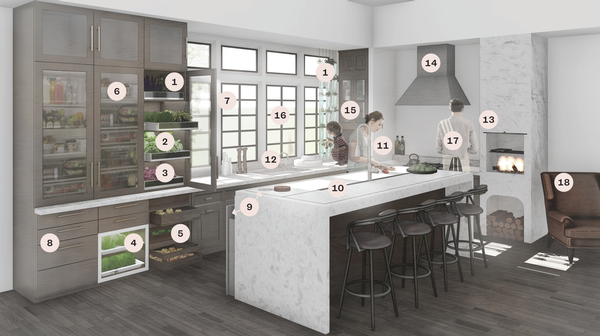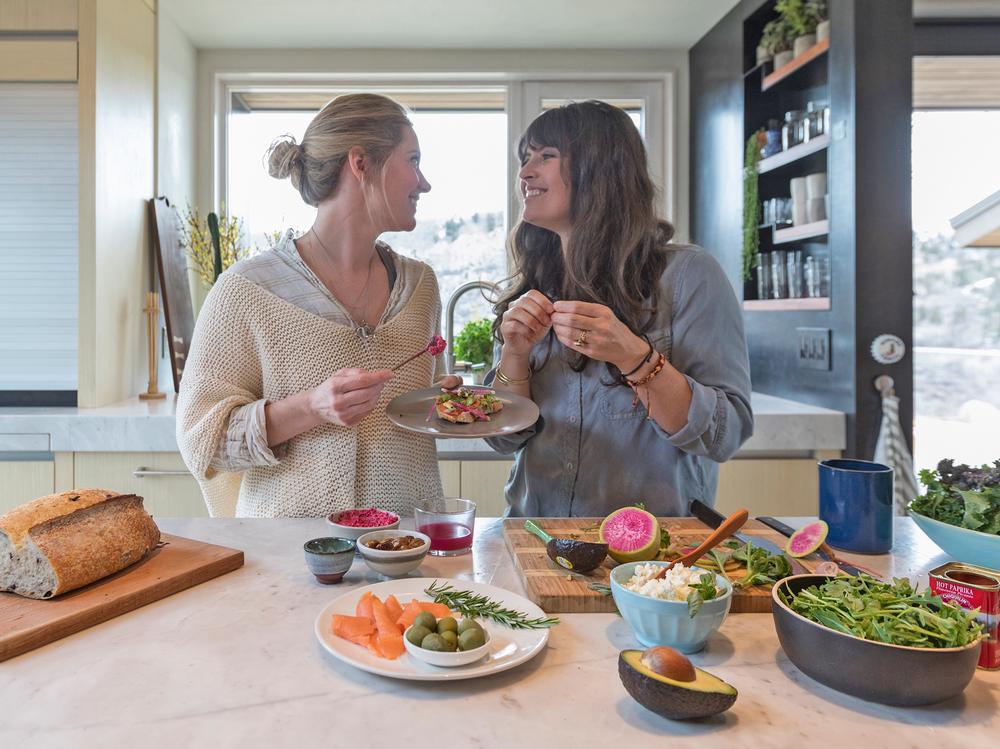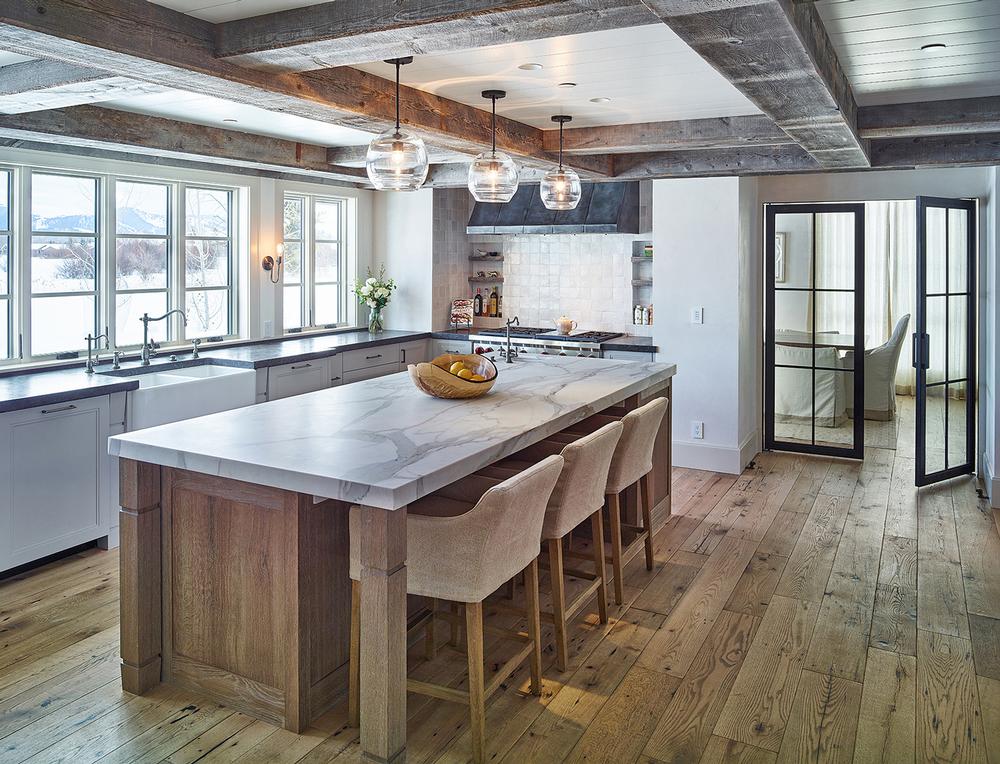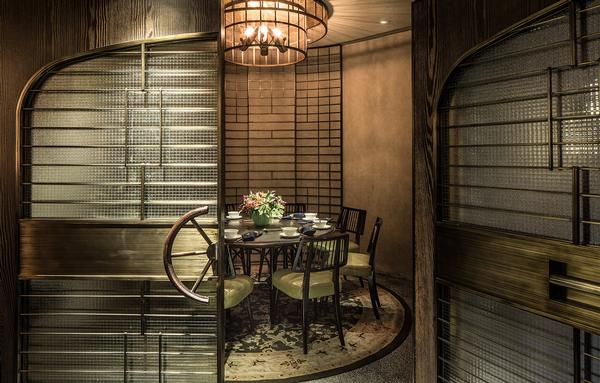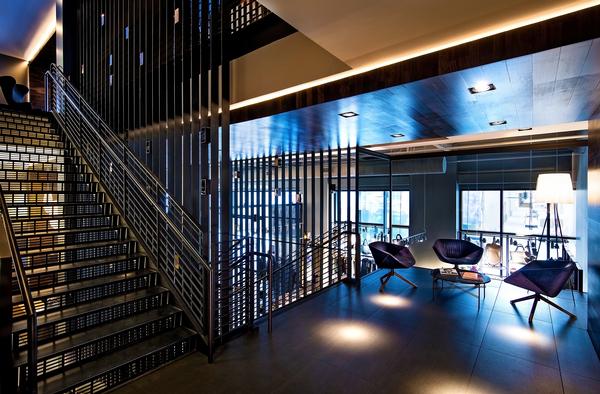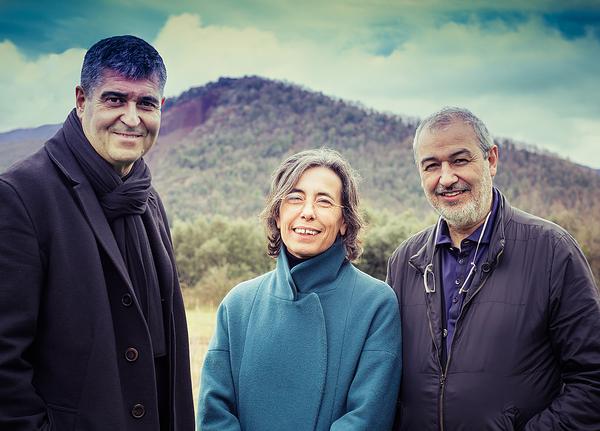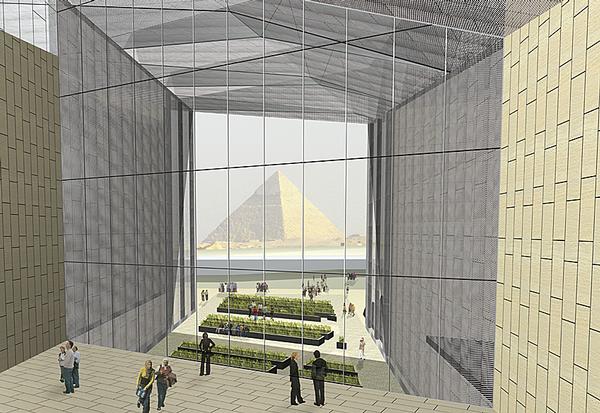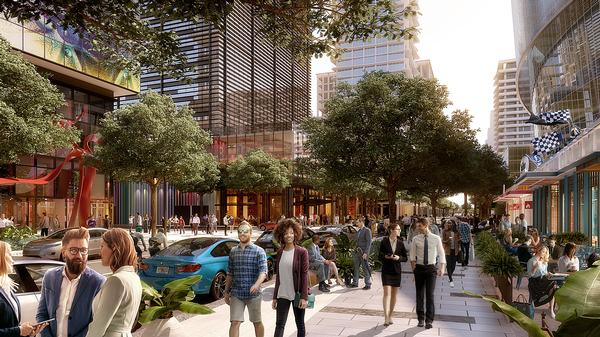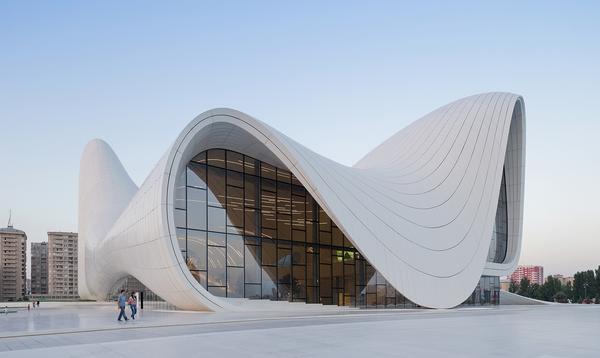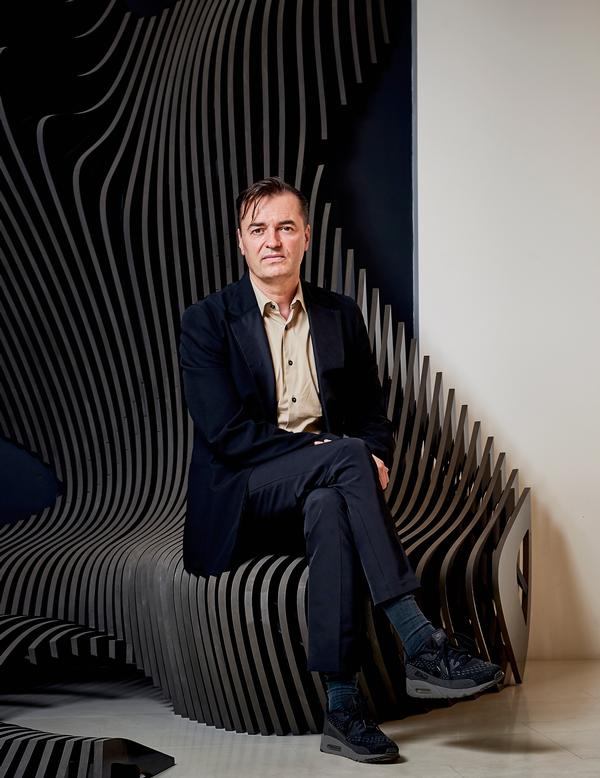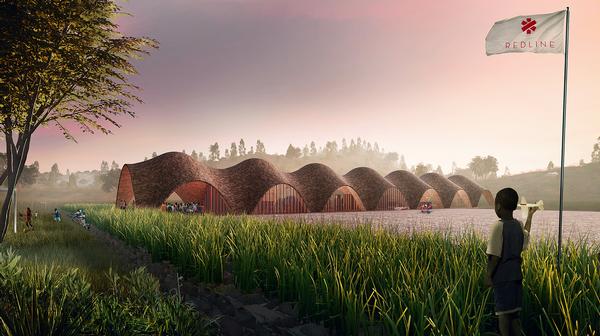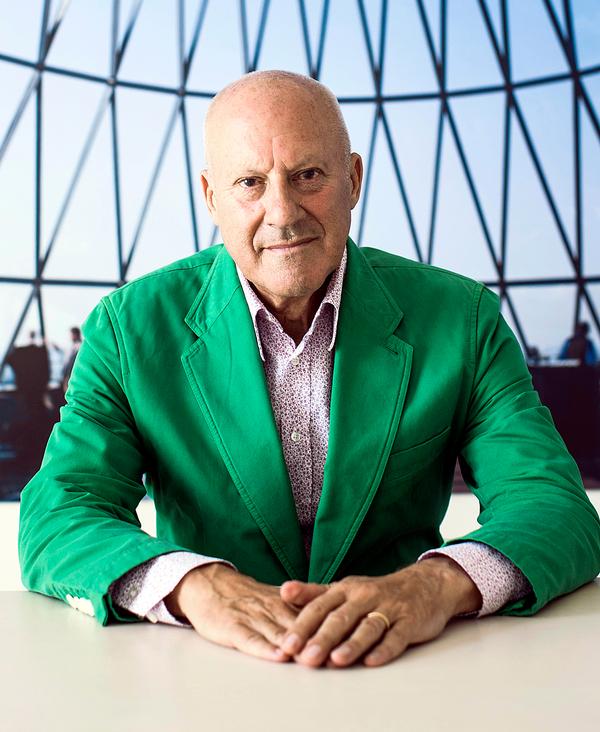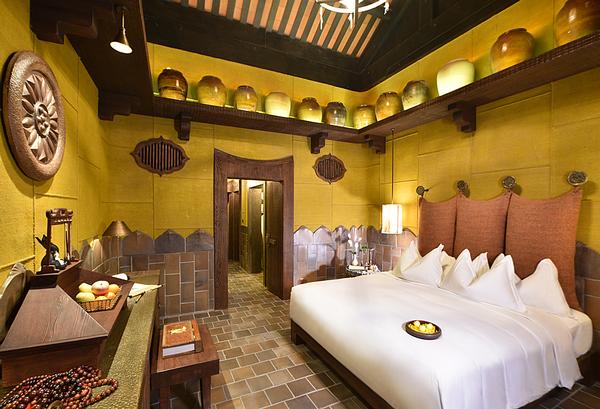Feature
The kitchen reimagined
Architect Veronica Schreibeis Smith has designed the kitchen of the future, by prioritising the health of herself and her family
As a busy mom and founding principal of a boutique architecture firm, I found myself without time or energy to feed myself, let alone nourish myself and my family with healthy, nutrient-rich meals.
Like many of us over recent years, I’d become acutely aware of the role nutrition plays in empowering wellbeing, longevity, and performance – not to mention the prevention of disease, illness, and premature aging.
My desperation to make healthy eating a reality for my family and my frustration with the challenge fuelled the inspiration for the Wellness Kitchen.
I had realised two things: firstly, kitchens have changed little over the last 70 years, despite massive shifts in the food industry, and secondly, the majority of time-saving elements in kitchens are there to service diets that consist of eating preservative-laden, highly-processed food.
So the kitchen had to be re-imagined to make it more convenient to eat a living, vegetable-based diet, while daily rituals had to be both a realistic and an enjoyable reprieve from the frenetic pace of everyday life in the information era.
New focus
The project began by re-imagining all aspects of how we consume food at home; from the delivery, storage, preparation, cooking, and consumption of food, all the way through to its disposal.
Rather than prescribing any particular diet or trend – vegan, paleo, and so on – the underlying premise was that the closer the food is to its natural state, and the less adulterated it and its packaging is, the better it is for you and the planet.
I believe future food delivery services and apps will have the ability to plan meals which are tailored to your family’s health needs (ie pre-natal, flu-season), and select recipes around your cooking style and ability preferences.
These apps will have the ability to inform an automated home-delivery system to supply your household with dormant and raw bulk goods, while hydroponic refrigeration appliances will facilitate the in-home growing of living vegetables and herbs.
In the future, plastics, coated metals, and other packaging that can be toxic or wasteful will be replaced. Cupboards, pantries, and refrigerators as we know them will become a thing of the past, and in their place will be temperature- and humidity-controlled storage, with glass fronts, keeping food alive and fresh, while visually tempting us to consume produce before it goes bad.
Frozen waste
One of the most exciting innovations in this field is the FroPost™, an appliance which is designed to conveniently freeze and compact cubes of compost.
Why compact trash to send more waste to a landfill, when we can replenish the Earth’s topsoil with leftover nutrients in the stems and by-products of a biodynamic diet?
Moreover, why send precious organic matter to the landfill, only to then fertilise soil with synthetic chemicals?
Living lab
I’ve used my own life as a living lab to study the hurdles of reality from a busy career-mom’s perspective – one who doesn’t take naturally to planning or cooking meals, and who even saw such tasks as a burdensome and time-consuming duty.
I’ve noted my struggles, and how and where nudge psychology and design can help alter my preconceptions and behaviour pattern – from budgeting for high-quality food to seeing a more playful and meditative side of food preparation, turning daily habits into joyful rituals.
Our goal at Vera Iconica Kitchen is to bolster healthy movements in the food industry with designs and experiences that empower and inspire holistic, and realistic, eating habits. We want to hear from you, and share success stories and real-world examples, from the tiniest behaviour change to full-blown kitchen remodels. Together, we can nourish our families while enhancing planetary health.
1. Delivery
CONVENTIONAL
Groceries are packaged in various paper, aluminium, and plastic products. Toxins leach into your foods and beverages from these materials – further adulterating edible goods already laden with preservatives and synthetic colourants.
VS
WELLNESS
Convenience is key. Fresh food is harvested from indoor gardens or purchased from local farmers’ markets; organic home delivery services are automated online, and bulk goods are a staple.
2. Storage
CONVENTIONALFood storage is limited and either at or near freezing temperatures, or room temperature; all of which is behind closed doors, allowing food to be easily forgotten about for weeks or even years.
VS
WELLNESS
Various temperature and humidity controlled environments ensure fresh food is stored properly. Cupboards come complete with running water and glass display doors or cellar-like bins.
3. Preparation
CONVENTIONALPre-made, pre-mixed, and ‘helper’ meals come in excessive packaging and require little to no preparation, thereby negatively impacting health and family collaboration.
VS
WELLNESS
Fresh food means little packaging and hands-on prep work. The Island is re-designed to accommodate multiple work stations and a central trough drain allowing for easy clean up.
4. Cooking
CONVENTIONALSince the dawn of the TV dinner, microwaves have become a staple to not only reheat, but also thaw and cook main dishes.
VS
WELLNESS
Diverse cooking sources (range, oven, open fire, etc) provide a wide range of temperatures, while simultaneously offering new ways to maintain nutrients, enhance natural flavours, and broaden culinary influences.
5. Social activity
CONVENTIONALFormal dining traditions designed the kitchen for women or the help to prepare food in isolation before serving the dishes in a separate space, removing our collective relationship with food.
VS
WELLNESS
The kitchen is the true heart of the home. Designing this space to comfortably gather, entertain, and nourish one another with multiple workstations and seating areas empowers our relationships with others and with food.
6. Consumption
CONVENTIONALFast, unconscious eating habits lead to an increase in the proportion of food that lack nutrients. Harmful additives that provide convenience and a long shelf-life are readily consumed.
VS
WELLNESS
Digestion begins with the eyes, so visible food is prominent. Transparent food storage tempts and encourages consumption. Food preparation techniques allow us to harness more energy from our food and regulate portions.
7. Disposal
CONVENTIONALPackaging waste and food waste are put in the trash and sent to landfill. Only some packaging materials are recycled.
VS
WELLNESS
Unpackaged fresh food and re-usable containers keep trash to a minimum, while compost collection is made easy, allowing all organic matter to go back into the soil.
Conventional kitchen
1. Heavy packaging on grocery items (ie shrink-wrap plastics, plastic containers/ bottles/jugs, plastic lined tin cans) ends up in landfills.
2. Harmful chemicals from food packaging leach into food and we then ingest these.
3. Many packaged foods have been chemically altered to ‘last’ (preservatives) and have ‘colour’ by the addition of synthetic, harmful additives, so that they appear to be in good condition. This can include irradiation.
4. Refrigerator/freezer keeps food extremely cold, either at or near freezing temperatures, and rapidly dehydrates fresh fruits and vegetables.
5. The pantry is designed for canned (non-perishable) and boxed foods which are stored at warm, room temperatures.
6. Large, deep refrigerators hide foods from view. Food is forgotten, left to degrade and expires before it’s consumed.
7. Upper storage cabinetry is visually and psychologically heavy.
8. All organisation is behind closed doors. Dishware, glassware, flatware, and food locations are a mystery to visitors, aiding in cognitive confusion. Also, dishes are commonly stored in upper cabinets, causing unnecessary strain through repetitive lifting, because lower cabinets do not typically have drawers for easy access and use.
9. Excessive garbage has created the need for trash compactors. Trash and recycling centres handle large amounts of waste that mostly goes to landfill, while only a small portion can be truly recycled.
10. Secondary, smaller sinks are common and often placed in the island only a few feet from the main sink.
11. Kitchens are typically designed for one cook, despite trends of social cooking and its benefits for families and communities.
12. No filtered water at sinks. Contaminant-laden water available for easy drinking.
13. Since the dawn of the TV dinner, microwaves are often used more frequently than ranges. Microwaves have been known to alter our food, and its molecular structure, due to radiation.
14. Range vents (commonly found above range microwaves) recirculate air contaminants because many (surprisingly, most) are not vented to the exterior.
15. Appliances often accumulate and are left to clutter valuable counter space. Or, appliances are stored in inconvenient, hard to access areas, making them less desirable to use.
16. There is little or no natural daylight.
17. Woman/women (or help) prepare the food in isolation, before serving the dishes in a separate space.
18. Not designed to function well as a gathering space.
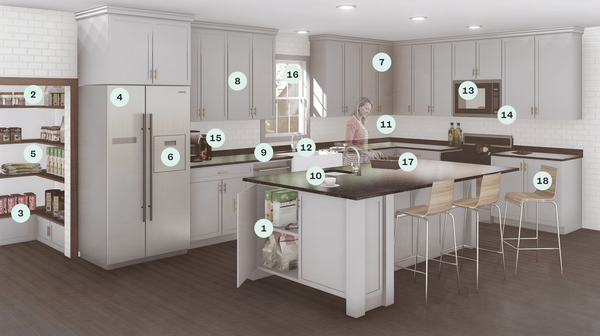
Wellness kitchen
1. Farm-fresh produce and home-grown food (ie in window gardens) have no packaging to contribute to landfills. No packaging means no harmful toxins infiltrating our food supply. Reusable containers for bulk goods, as well as home delivery services, reduce packaging waste that would otherwise go to landfill.
2. Fresh, natural food has little to no preservatives, thereby ensuring vitality and promoting good health. Harvesting and producing food products at home is possible and has a positive impact.
3. Temperature- and humidity-controlled cabinets with running water keep fresh food alive and nutrient-rich.
4. Cellar-like storage (dark and cool) for root vegetables, apples and other harvest produce, allows goods to last well throughout the coming seasons.
5. Visually seeing available, healthy foods tempts you to eat the fresh, nutritious options before they perish.
6. Upper organisation designed to feel beautiful and open above the counter so perishable foods are easily visible.
7. Organisation for dishwater, flatware, and utensils is below the counter in well-organised drawers designed thoughtfully, taking into account proper ergonomics for moving heavy items and having efficient access.
8. Vegetable-rich diets and meals that utilise bulk ingredients lead to less waste. The trash compactor is replaced by a Fro-Post™ compacting composter that freezes food waste, mitigating unpleasant scents and encouraging cellular breakdown for easy return to the soil via backyard or community/composting organisations.
9. Island is now a large prep station for multiple people where food can be prepared directly on the surface. Surface can be hosed down easily, and features a central trench drain and smart-edge gutters that allow for easy, quick clean up.
10. An added health benefit comes through more conscious connections to our food.
11, Digestion begins with the eyes, and social connection is enhanced through collaborative food preparation.
12. Water filtration system is integrated with the primary water tap/faucet for easy access to healthy drinking water.
13. Multiple cooking methods are nurtured and encouraged. Fire, water and range-type cooking are within reach, for added flavour, nutrients and cultural influence.
14. Range hood vents to the exterior.
15. An appliance garage conceals but maintains easy access, thereby keeping surfaces uncluttered. Juicers, a Vitamix and high-powered mixers aid in food prep without killing valuable enzymes.
16. Lots of natural daylight filters into the space through many windows, ideal for supporting window garden systems and healthy circadian rhythms.
17. Everyone’s a chef and everyone contributes to meal preparation and serving.
18. As the heart of the home, multiple seating options, including casual seating by the fire, encourages gathering.
